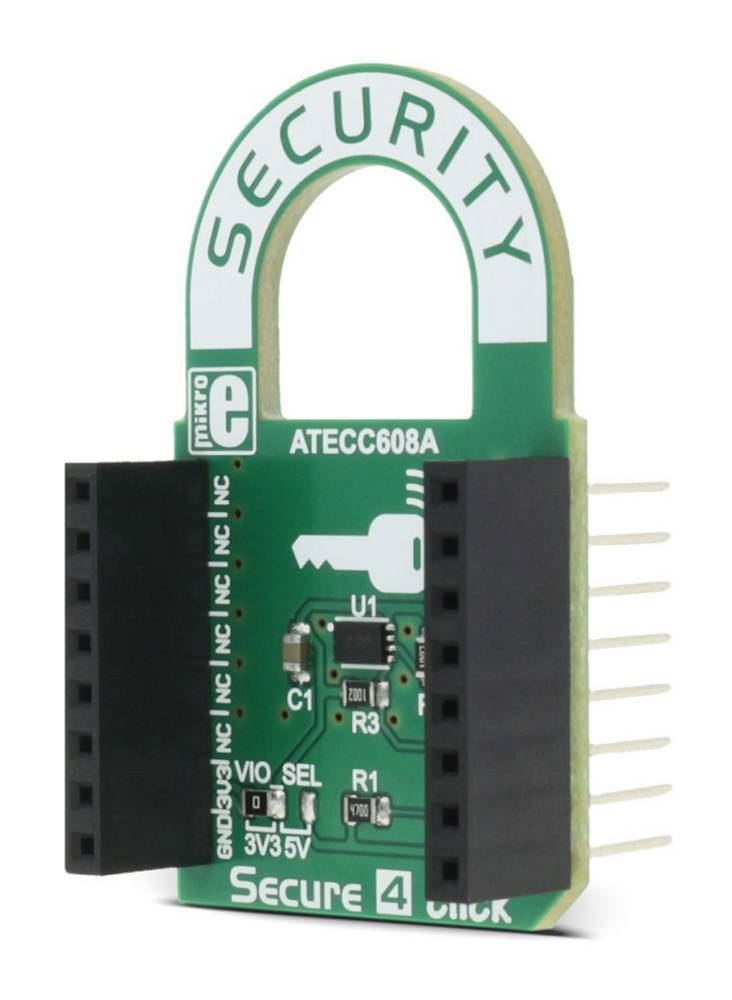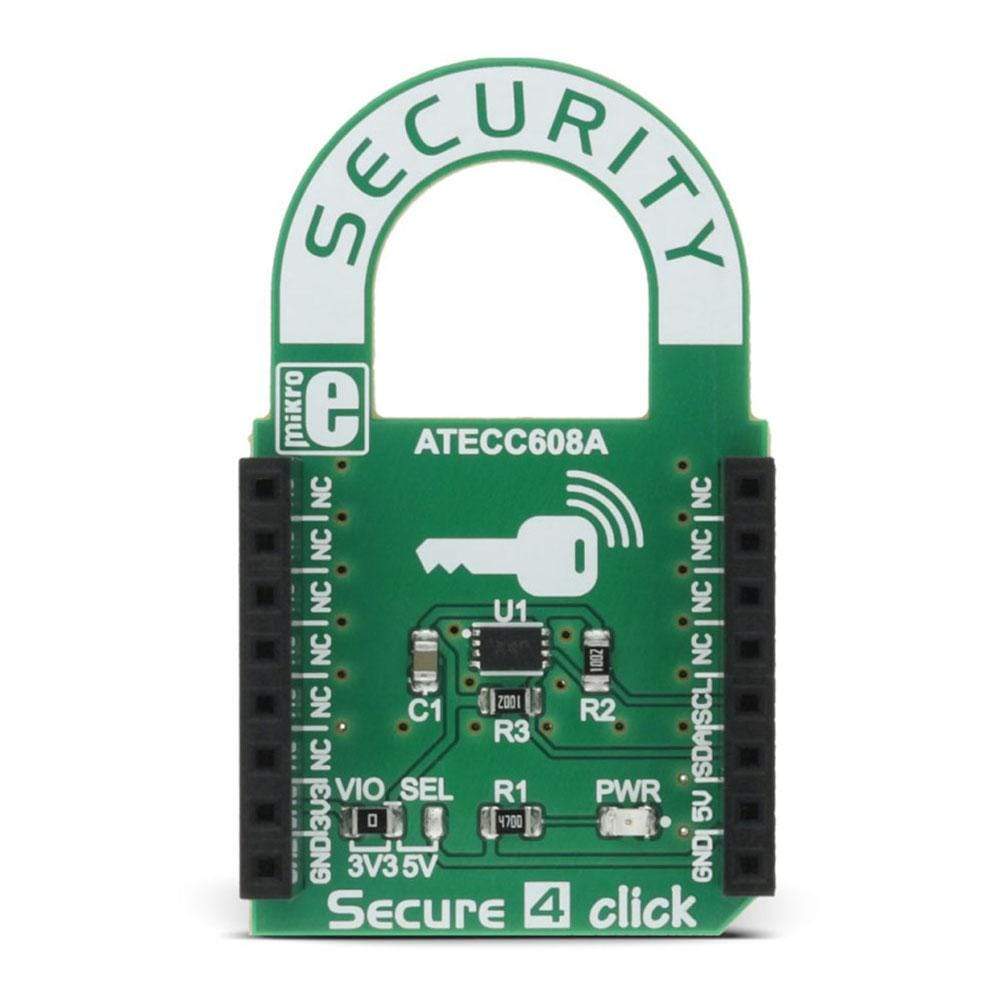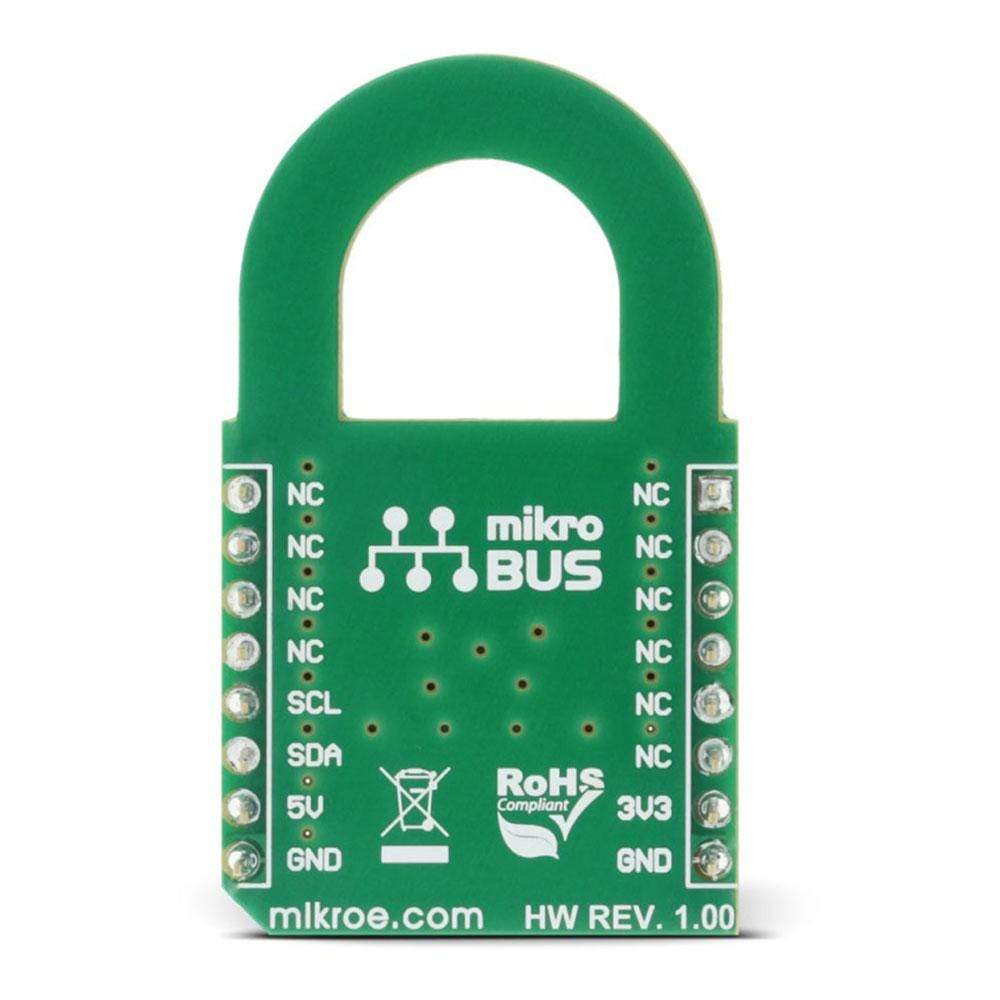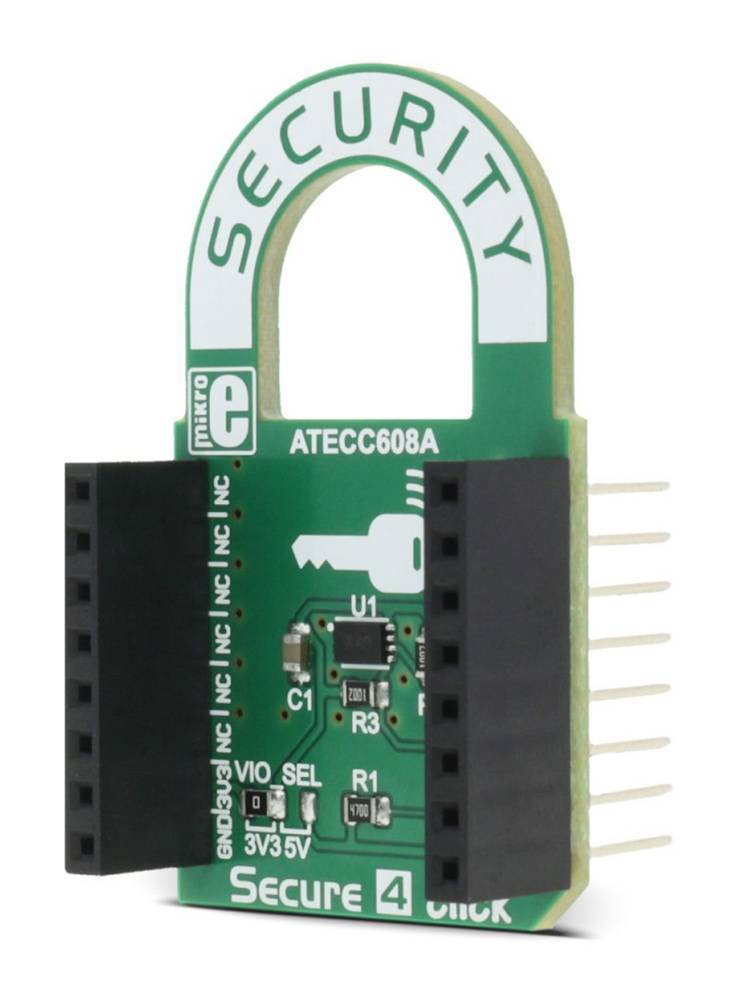
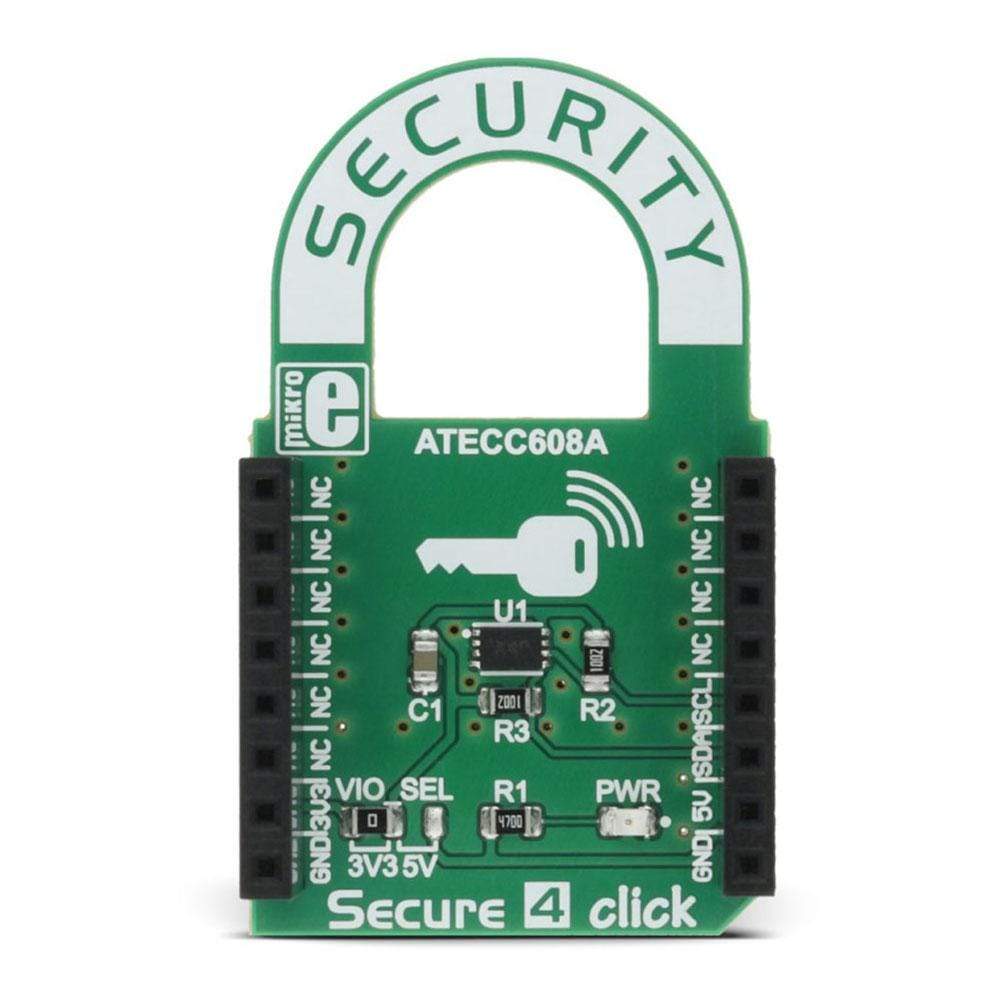
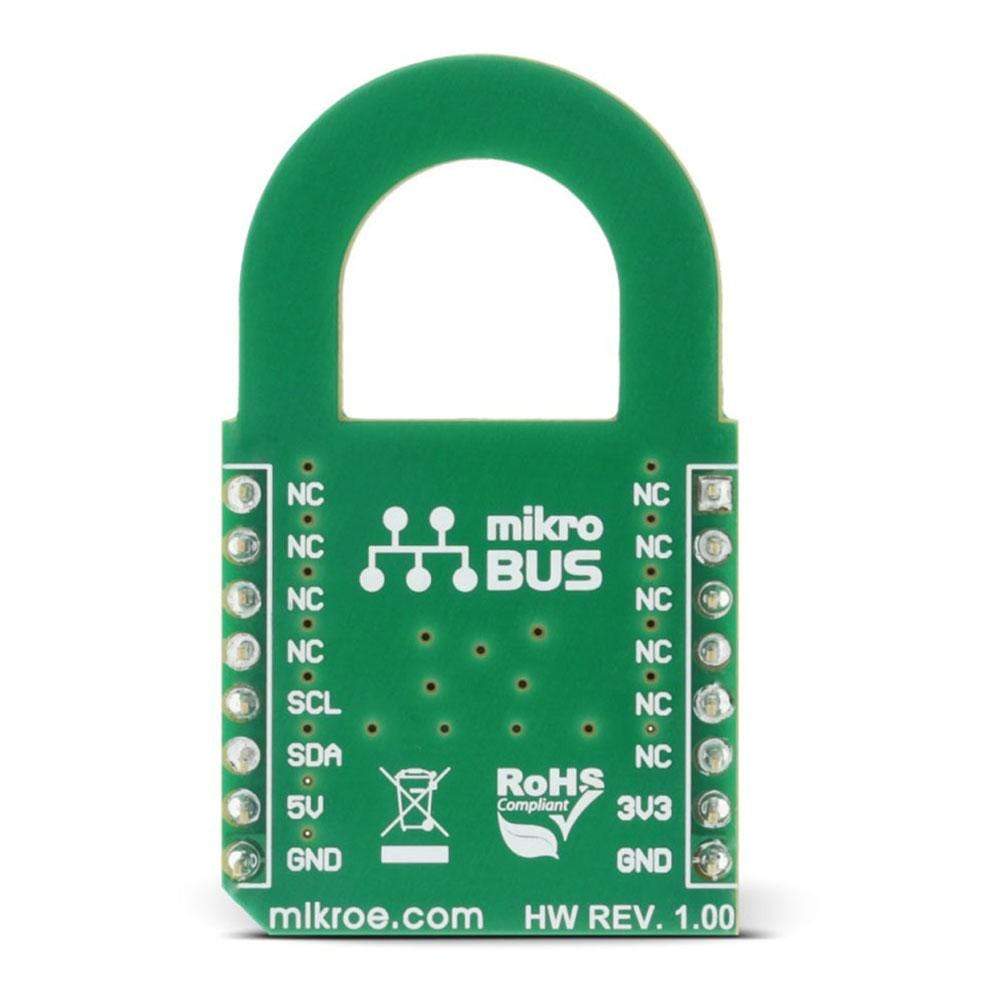
Overview
The Secure 4 Click Board™ includes the ATECC608A, a secure CryptoAuthentication device from Microchip, which is equipped with an EEPROM array. The EEPROM can be used for storing up to 16 keys, certificates, consumption logging, security configurations and other types of secure data. Access to the various sections of memory can be restricted in several different ways and then the configuration can be locked permanently, to prevent changes.
Downloads
Das Secure 4 Click Board™ enthält das ATECC608A, ein sicheres CryptoAuthentication-Gerät von Microchip, das mit einem EEPROM-Array ausgestattet ist. Das EEPROM kann zum Speichern von bis zu 16 Schlüsseln, Zertifikaten, Verbrauchsprotokollen, Sicherheitskonfigurationen und anderen Arten sicherer Daten verwendet werden. Der Zugriff auf die verschiedenen Speicherbereiche kann auf verschiedene Weise eingeschränkt werden, und die Konfiguration kann dann dauerhaft gesperrt werden, um Änderungen zu verhindern.
| General Information | |
|---|---|
Part Number (SKU) |
MIKROE-2829
|
Manufacturer |
|
| Physical and Mechanical | |
Weight |
0.019 kg
|
| Other | |
Country of Origin |
|
HS Code Customs Tariff code
|
|
EAN |
8606018711987
|
Warranty |
|
Frequently Asked Questions
Have a Question?
Be the first to ask a question about this.

